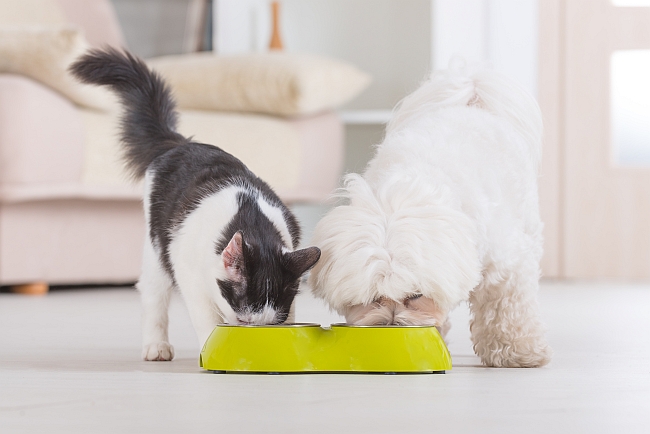
Let’s face it; we live in a culture where starches are staples. It seems as if every meal is augmented by carbohydrates, starches or grains of some kind. Though most people recognize the peril of eating copious amounts of starches, few consider the same toll it takes on dogs. Most pet food diets consist of nothing more than flavorful fats and starches with little nutritional value. Often the price of the pet food will have more bearing on the purchase than the quality of the product; but responsible pet parents know better. Beyond the advertising ploys and marketing schemes, let’s take a look at why a starch-free diet may be the best way to go.
Archetypal Diets
Dogs and cats have are naturally carnivores. In the wild, their ancestors would eat whatever animal meat/skin/bones that they could find. This protein-rich diet supplies exactly what animals need to thrive and have healthy lives. Food products that have low protein content simply do not supply the nutritional needs of cats and dogs. Instead of removing grains and replacing them with proteins, most companies add useless starches which negatively affect a pet’s well being. The highest quality pet food products replace starches with meat and proteins, adding various other vitamins and nutrients, to replicate a dog or cat’s instinctive dietary cravings as best they can.
Starch-Free Diets Fortify Your Pet
When a dog or cat is consistently fed a starch-free, high-protein diet, it has been scientifically proven that he will be less likely to suffer from many of the common diseases which ail most pets. Some of these include: dental disease, obesity, diabetes, cancer, organ failure, feline urinary stones, infections, immune deficiency, etc. When a creature has a balanced diet, he is better equipped to fight diseases and decrease susceptibility to infection. Essentially, a starch-free diet improves an animal’s overall health.
Don’t Always Trust Pet Food Labels
“Grain-Free” does not mean “Starch Free”: Many pet food companies market their products as “Grain Free” hoping to coax pet parents into providing what they believe will be healthier meals for their pets. In actuality, many of these “grain free” blends swap out whole grains and replace them with less healthful options like tapioca, potatoes or peas. This feeds the pet unhelpful fillers instead of the nutrients he needs, often resulting in allergies, feeble heath and physical concerns. Thus, most “Grain-Free” products offer little to no physical benefit to the pet, but cost more than other pet food products. When purchasing dog food, be sure to look for a “Starch-Free” product and avoid labels that claim to be “all-natural” or “grain-free.”
Stay informed! If you are considering a specific pet food company or product line, call the company directly and ask for details about the ingredients list. Just because something is printed on a package does not mean that it accurately represents what is inside.
One reputable pet food company provides honest advertisement, delineating the ingredients of product they make, without using false marketing schemes to entice their customers. Their products inform the pet owners of the best balanced nutrition based on a genuinely natural diet, while discussing the challenging realities of pet food production. Refer to Wysong Epigen to see how they approach the topic of creating genetically appropriate pet nutrition.
When determining which line of pet food is best for your dog or cat, dedicate as much research as you would invest if it were your own nourishment. Pets rely upon their owners to provide them with the resources and provision they need. The more you know about pet nutrition and food, the better equipped you will be to sift through the false companies and provide your pet the lifestyle, nutrition and health he deserves.

